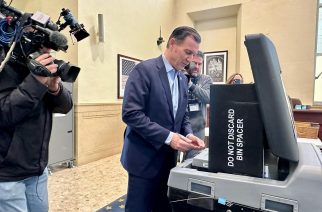 A lawmaker is “appalled” over the DEC’s black bear management plan that aims to expand hunting opportunities in New York.
A lawmaker is “appalled” over the DEC’s black bear management plan that aims to expand hunting opportunities in New York.
The Department of Environmental Conservation on April 6 released its annual bear harvest report, noting that the 2015 hunting season saw the second largest bear harvest on record.
In 2015, there were 1,715 black bears killed by New York hunters, surpassed only by the 2003 season that saw 1,863 bears killed.
According to the DEC, the bear population is thriving in New York state, providing more opportunities for wildlife watchers and hunters.
“Our bear population is flourishing in New York state, providing increased opportunities for hunters and wildlife watchers alike to enjoy these important species,” said DEC Acting Commissioner Basil Seggos. “DEC’s science based management strategies are working to maintain the bear population and allow for expanded hunting opportunities.”
Assemblywoman Linda Rosenthal, D-Manhattan, criticized the plan for its reference to expanding black bear hunting opportunities.
“This is sick and the DEC has absolutely nothing about which to be proud,” Rosenthal said.
According to the DEC’s website, the 2014-2024 black bear management plan strives to: maintain bear populations at levels acceptable to the public; promote and enhance bear hunting as an important management tool; minimize the frequency and severity of human-bear conflicts; foster understanding and communication about bear ecology; and ensure management resources are available.
Rosenthal is interpreting Seggos’ statement that the DEC is maintaining the bear population for the benefit of hunters.
“While hunting may be an economic boon to the state, it is appalling that a state agency would take an active role in creating a larger population of bears whose sole purpose is to be born in order to be killed,” Rosenthal said.
During the 2015 bear season, there were 583 bears killed in the northern zone of New York State and 1,132 killed in the southern zone.
Hunters play a pivotal role in bear management by reporting their bear harvests, and many hunters also submit a tooth sample from their bear for DEC to assist in compiling data about the state’s bear population.









